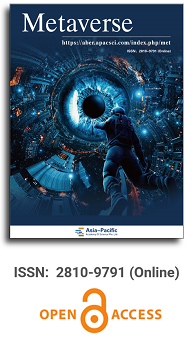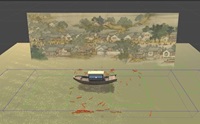
Asia Pacific Academy of Science Pte. Ltd. (APACSCI) specializes in international journal publishing. APACSCI adopts the open access publishing model and provides an important communication bridge for academic groups whose interest fields include engineering, technology, medicine, computer, mathematics, agriculture and forestry, and environment.


Evaluation of parametric sedan wheel hub based on Kansei Engineering and regression analysis
Vol 5, Issue 1, 2024
Download PDF
Abstract
Purpose: Parametric design has become one of the most important means of sedan design. The purpose of this paper is to construct a linear regression model to explore the matching relationship between Kansei words and the morphological elements of sedan wheels and to incorporate perceptual factors into the rational thinking of parametric wheel hub design. Design/methodology/approach: To forecast the matching relationship between wheel shape design features and semantics, this research offers a multiple linear regression model. First, using sample similarity matrix data analysis and offline research, 20 typical samples of car wheels were collected. Third, the wheel shape design elements are obtained by applying the semantic difference (SD) method to four groups of users’ evaluation data on the perceived words of the car wheels. Firstly, the wheel shape is divided into six basic features and seventeen subdivided features using morphological analysis. The collected car wheel samples are then researched and coded. Ultimately, a multiple linear regression model is built utilizing shape coding matching to the styles to direct the wheel parametric design process, yielding sedan wheel design schemes with various semantics of style. Findings: The results show that the regression models can provide good prediction performance (R2 values are greater than 0.7). This study shows that the use of multiple regression models can accurately and cost-effectively predict the wheel hub morphological elements that meet the user’s perceptual needs through morphological elements and Kansei words. Originality/value: This paper is the first to use a multiple regression model to predict a parametric wheel shape that fits the user’s sensibility, which helps the user to present and feel the design scheme in a digital environment. The different wheel hub schemes generated by parametric design can be virtually displayed in the metaverse, helping users and designers to carry out more convenient scheme selections.
Keywords
References
1. Ou C, Wang M. Research on the application of parametric design based on sedan styling design. Automobile Design. 2016, 16: 96–97.
2. Liu S. Research and Application on Product Identification of Household Bread-Making Machine [Master’s thesis]. Qilu University of Technology; 2021.
3. Zhu Y, Tang W. Modeling design of waterjet machine tool based on Kansei Engineering. In: Lecture Notes in Networks and Systems, Proceedings of AHFE 2021 Virtual Conferences on Design for Inclusion, Affective and Pleasurable Design, Interdisciplinary Practice in Industrial Design, Kansei Engineering, and Human Factors for Apparel and Textile Engineering; 25–29 July 2021; Online conference. Springer; 2021. pp. 1064–1071. doi: 10.1007/978-3-030-80829-7_130
4. Feng Y. From scripting the future to fabricating the future. Times Architecture. 2012, 5: 10–21.
5. Anton I, Tănase D. Informed geometries. Parametric modelling and energy analysis in early stages of design. Energy Procedia. 2016, 85: 9–16. doi: 10.1016/j.egypro.2015.12.269
6. El-Dabaa R, Abdelmohsen S. A methodology for evaluating the hygroscopic behavior of wood in adaptive building skins using motion grammar. IOP Conference Series: Materials Science and Engineering. 2018, 362: 012011. doi: 10.1088/1757-899x/362/1/012011
7. Oxman R. Thinking difference: Theories and models of parametric design thinking. Design Studies. 2017, 52: 4–39. doi: 10.1016/j.destud.2017.06.001
8. Suyoto W, Indraprastha A, Purbo HW. Parametric approach as a tool for decision-making in planning and design process. Case study: Office tower in Kebayoran Lama. Procedia—Social and Behavioral Sciences. 2015, 184: 328–337. doi: 10.1016/j.sbspro.2015.05.098
9. Lim D, Georgiou T, Bhardwaj A, et al. Customization of a 3D printed prosthetic finger using parametric modeling. In: Proceedings of International Design Engineering Technical Conferences and Computers and Information in Engineering Conference; 26–29 August 2018; Quebec City, Quebec, Canada. doi: 10.1115/DETC2018-85645
10. Luo S.J., Fu Y.T., Korvenmaa P. A preliminary study of perceptual matching for the evaluation of beverage bottle design. International Journal of Industrial Ergonomics. 2012, 42(2): 219–232. doi: 10.1016/j.ergon.2012.01.007
11. Nagamachi M. Kansei engineering as a powerful consumer-oriented technology for product development. Applied Ergonomics. 2002, 33(3): 289–294. doi: 10.1016/s0003-6870(02)00019-4
12. Nagamachi M. Kansei Engineering: A new ergonomic consumer-oriented technology for product development. International Journal of Industrial Ergonomics. 1995, 15(1): 3–11. doi: 10.1016/0169-8141(94)00052-5
13. Giannini F, Monti M, Podehl G. Styling properties and features in computer aided industrial design. Computer-Aided Design and Applications. 2004, 1(1–4): 321–330. doi: 10.1080/16864360.2004.10738273
14. Ostrosi E, Bluntzer JB, Zhang Z, et al. Car style-holon recognition in computer-aided design. Journal of Computational Design and Engineering. 2019, 6(4): 719–738. doi: 10.1016/j.jcde.2018.10.005
15. Hyun KH, Lee JH, Kim M, et al. Style synthesis and analysis of car designs for style quantification based on product appearance similarities. Advanced Engineering Informatics. 2015, 29(3): 483–494. doi: 10.1016/j.aei.2015.04.001
16. Osgood CE, Suci GJ, Tannenbaum PH. The Measurement of Meaning. University of Illinois Press; 1957.
17. Chou JR. A Kansei evaluation approach based on the technique of computing with words. Advanced Engineering Informatics. 2016, 30(1): 1–15. doi: 10.1016/j.aei.2015.11.001
18. Razza B, Paschoarelli LC. Affective perception of disposable razors: A Kansei Engineering approach. Procedia Manufacturing. 2015, 3: 6228–6236. doi: 10.1016/j.promfg.2015.07.750
19. Zhao Q, Wang Z, Fan B. An introduction of Kansei Engineering and it’s research status in Japan. Art and Design. 2007, 4: 32–34.
20. Samsonovic AV, Ascoli GA. Principal semantic components of language and the measurement of meaning. PLoS One. 2010, 5(6): e10921. doi: 10.1371/journal.pone.0010921
21. Myllyntaus O. Visual arts education reasoning the acquisition and placement of public sculptures—Case of the public sculptures of the Jyväskylä City Art Collection in 1977–2007. Procedia—Social and Behavioral Sciences. 2012, 45: 605–614. doi: 10.1016/j.sbspro.2012.06.
22. Bi Y, Wang N, Zhe Y. Form design of accompany robot for the elderly based on Kansei Engineering. Packaging Engineering. 2018, 39(2): 160–165.
23. Nui Z, He S. Research on design of Lunchbox CMF based on semantic difference method. Design. 2017, 15: 104–105.
24. Hu X, Li D, Hu X. Office warm treasure design based on harmonious situation and semantic difference method. Packaging Engineering. 2019, 40(20): 130–136.
25. Dunia R, Joe Qin S. Joint diagnosis of process and sensor faults using principal component analysis. Control Engineering Practice. 1998, 6(4): 457–469. doi: 10.1016/s0967-0661(98)00027-6
26. Chen HS, Li Y, Song W. The application of traditional artifacts design evaluation based on glamour engineering. Packaging Engineering. 2021, 42(08): 303–313.
27. Wang XT, Wang C, Wang HH. Modeling design of electric scooter for the elderly based on the theory of quantification-1 type. Machinery Design & Manufacture. 2020, 7: 165–169.
28. Yu N, Zhang C, Du Y, Wang H. Furniture modeling image design based on quantitative theory. Packaging Engineering. 2018, 39(22): 183–188.
29. Wang J, Yannou B, Alizon F, et al. A usage coverage-based approach for assessing product family design. Engineering with Computers. 2012, 29(4): 449–465. doi: 10.1007/s00366-012-0262-1
30. Wang J, Lu G, Zhang Y. Quantification-I theory based IGA and its application. Journal of Zhejiang University (Engineering Science). 2013, 47(10): 1697–1704. doi: 10.3785/j.issn.1008-973X.2013.10.001
31. Wei Y. The design of electric drill based on Kansei Engineering. Packaging Engineering. 2016, 37(24): 108–113.
32. Likert R. A technique for the measurement of attitudes. Archives of Psychology. 1932, 22(140): 55–59.
33. Gan Y, Jj Y, Shi Y, Liu X. Method and application of user Kansei perception and product Kansei design. Packaging Engineering. 2021, 42(2): 22–34.
34. Nagamachi M. Kansei Engineering. Kaibundo Publishing Co. Ltd.; 1989.
35. Aktar Demirtas E, Anagun AS, Koksal G. Determination of optimal product styles by ordinal logistic regression versus conjoint analysis for kitchen faucets. International Journal of Industrial Ergonomics. 2009, 39(5): 866–875. doi: 10.1016/j.ergon.2009.06.007
36. Cheng Z, Ren X, Ke S, Qin Y. Parametric design of car wheel hub based on Kansei image. Journal of Machine Design. 2022, 39(4): 135–141.
37. Llinares C, Page AF. Kano’s model in Kansei Engineering to evaluate subjective real estate consumer preferences. International Journal of Industrial Ergonomics. 2011, 41(3): 233–246. doi: 10.1016/j.ergon.2011.01.011
Refbacks
- There are currently no refbacks.
Copyright (c) 2024 Yumiao Chen, Qiuyu Peng, Rui Huang, Jingfeng Shao

This work is licensed under a Creative Commons Attribution 4.0 International License.

This site is licensed under a Creative Commons Attribution 4.0 International License (CC BY 4.0).

Prof. Zhigeng Pan
Director, Institute for Metaverse, Nanjing University of Information Science & Technology, China

Prof. Jianrong Tan
Academician, Chinese Academy of Engineering, China
Platform: VooV Meeting Meeting ID: 688-583-586...





.jpg)
.jpg)

